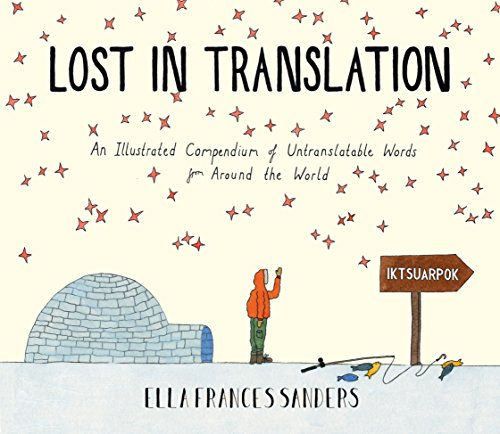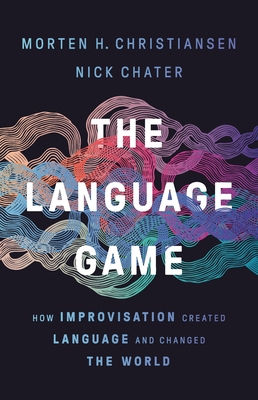Summer Reading List
- GBF Translations

- Jun 2
- 4 min read
Updated: Jul 3
Keep your brand voice sharp and culturally connected with these book recommendations.
We’ll be diving into these titles all summer, follow along and join the journey!
Lost in Translation: An Illustrated Compendium of Untranslatable Words from Around the World by Ella Frances Sanders

As the days grow longer and the pace of business shifts, summer is the perfect time to refresh your perspective and your communication strategy. This season, we’re diving into books that highlight the power of language, the beauty of cultural nuance, and the role thoughtful communication plays in building meaningful connections. Whether you're a business owner, marketer, or language enthusiast, these titles will help sharpen your message and expand your understanding of how words shape the world.
Lost in Translation is not a narrative book with a linear plot, but rather a collection of over 50 unique words from different languages around the world...words that express feelings, ideas, or experiences that don't have direct English equivalents. Each word is paired with a brief explanation of its meaning and context and complemented by whimsical hand-drawn illustrations that make abstract ideas visually tangible.
First Impressions
This book beautifully captures the limits of language... how sometimes the soul of a word or emotion can’t be neatly packed into a dictionary definition. That’s why it resonates so deeply with translators and cultural communicators. It reinforces the idea that translation isn’t just about finding equivalent words; it’s about conveying intention, tone, and cultural context.
Key Takeaways
Each entry feels like a short meditation on how cultures value time, relationships, nature, memory, and emotion. A few favorite examples:
Komorebi (Japanese) – The dappled light that filters through trees.
Goya (Urdu) – The transporting suspension of disbelief that can occur in a good story.
Sobremesa (Spanish) – The time spent lingering at the table after a meal.
Tingo (Pascuense, Easter Island) – To borrow things from a friend’s house, one by one, until there’s nothing left.
Jayus (Indonesian) – A joke so poorly told and unfunny that one can't help but laugh.
Apapachar (Spanish, from Nahuatl origin) — to embrace or cuddle with the soul.
These words remind us that language isn’t just a tool... it’s culture, emotion, memory.
For readers interested in branding, translation, or multicultural outreach, this book is a gentle yet powerful reminder of the value of precision and empathy in communication. It highlights why native-speaking translators are irreplaceable and inspires us to think beyond words; to connect through feeling and lived experience.
Final Thoughts
The charm of Lost in Translation isn’t just in the meanings, but in Sanders’ hand-drawn illustrations, which feel both minimalist and emotionally rich. They help you feel the word even if it’s unfamiliar, making it ideal for visual learners.
Lost in Translation is not a guidebook or textbook; it’s more like a coffee table book with depth. It invites reflection, sparks creativity, and reminds us of the deep humanity behind every language.

First Impressions
This profound and timely exploration of the political forces driving language extinction and, conversely, the movements dedicated to their revitalization. Far from being a mere lament about linguistic diversity, the book argues that language loss is often not a natural consequence of modernization, but rather a direct result of calculated authoritarian strategies, colonialism, and globalization.
Key Takeaways
Language as a Battleground for Identity and Power:
The central thesis of "Speak Not" is that language is intrinsically linked to identity and is a crucial battleground in the exercise of power.
Case Studies of Endangered and Revived Languages:
Griffiths provides in-depth historical and contemporary case studies, focusing primarily on:
Welsh: As a native Welsh speaker, Griffiths uses the revival of the Welsh language as a hopeful blueprint. He chronicles the contentious struggles and political will that led to its resurgence, demonstrating how a combination of top-down policies (education agendas) and bottom-up activism (civil society movements) can bring a language back from the brink.
Hawaiian: The book details how Hawaiian faced severe suppression due to American colonization, with islanders being forced to learn English.
Cantonese: Griffiths explores the precarious situation of Cantonese in the face of Mandarin (Putonghua) hegemony in China and Hong Kong.
Beyond these main three, Griffiths also touches upon other languages such as Afrikaans (examining its complex history as both a language of the oppressed and later, a tool of apartheid), Hebrew (a remarkable example of modern revival), Yiddish, Esperanto, and Tibetan.
Final Thoughts
Ultimately, "Speak Not" transcends a simple discussion of communication tools. Griffiths demonstrates that languages are far more than just systems of words; they are carriers of unique ideas, histories, mythologies, and ways of understanding the world. The loss of a language is thus a loss of a distinct worldview, a unique cultural heritage, and a vital part of human diversity. The book is a powerful call to action, reminding readers that the languages we speak and choose not to speak are the worlds in which we live, and these worlds are worth fighting for.

First Impressions
This book offers a radical and compelling re-evaluation of how language originated, how it works, and how it is acquired. They challenge long-held theories, particularly those centered on innate, hardwired grammatical rules (like Noam Chomsky's Universal Grammar), arguing instead for a model where language is fundamentally a dynamic, improvisational, and collaborative activity.
Key Takeaways
The core of Christiansen and Chater's theory is the metaphor of language as a game of charades.
The book directly confronts theories like Steven Pinker's "language instinct" and Chomsky's Universal Grammar (UG), which posit that humans are born with an innate, specialized capacity for language, including a pre-wired set of grammatical rules common to all languages.
A crucial part of their argument for improvisation stems from cognitive limitations, particularly our limited short-term memory (the "now-or-never bottleneck").
Final Thoughts
In essence, "The Language Game" presents a highly interactive, collaborative, and dynamic view of language, emphasizing human ingenuity and the power of improvisation as the driving forces behind our most extraordinary communicative ability. It argues that language is a messy, beautiful "game" we constantly create and re-create in our daily interactions.




Comments